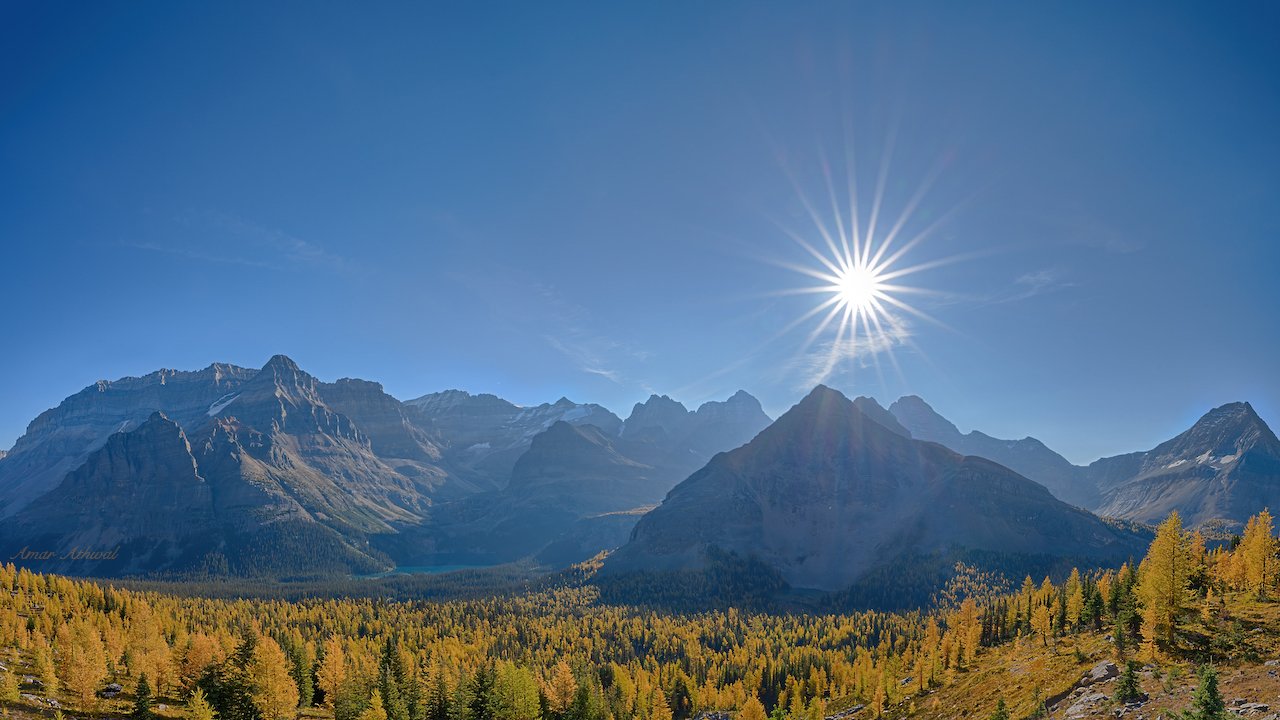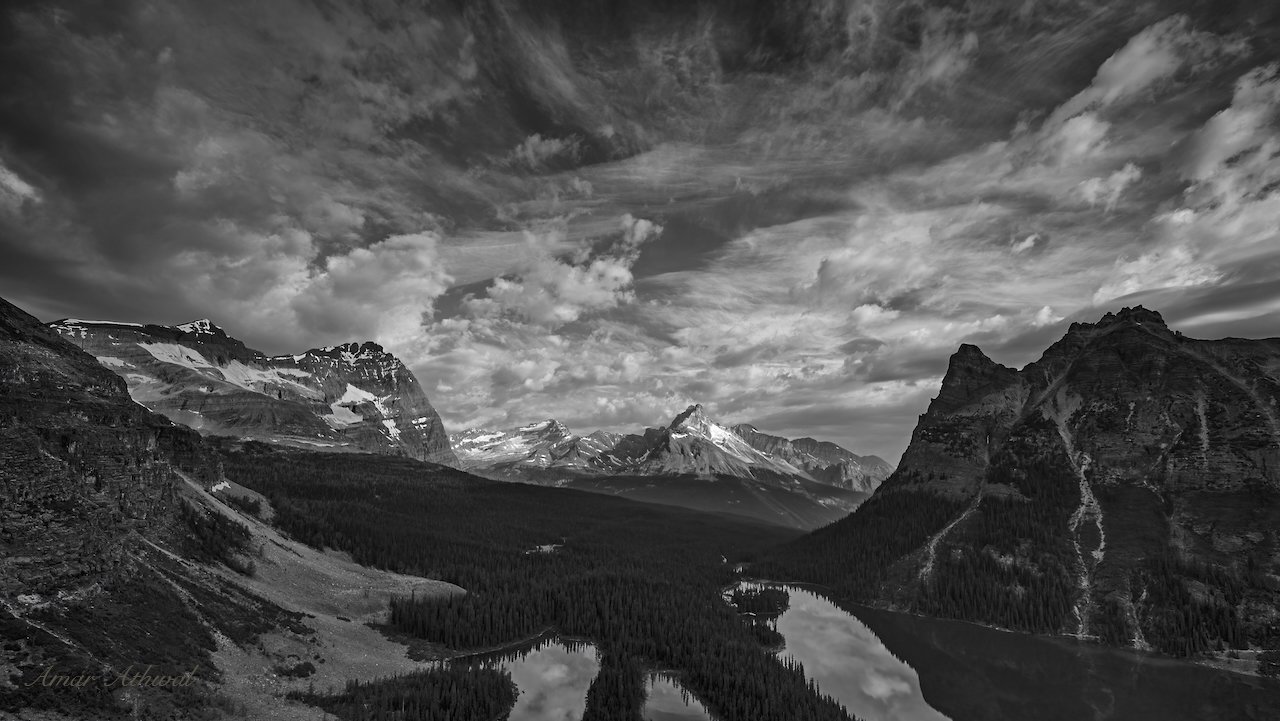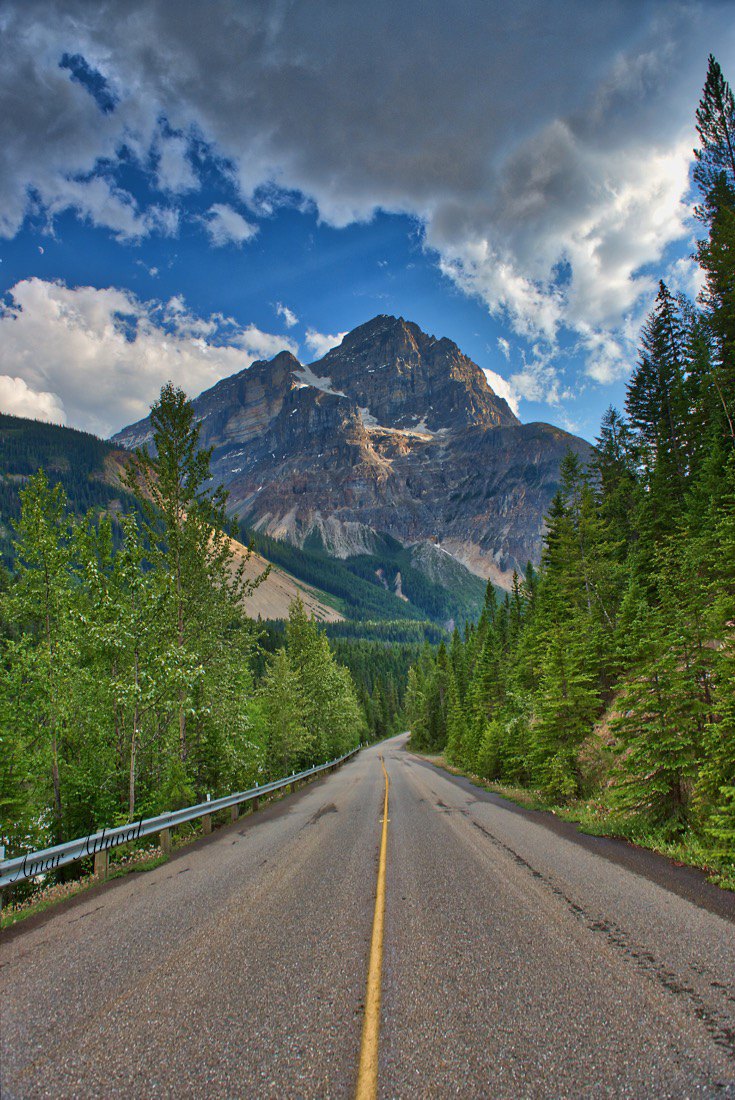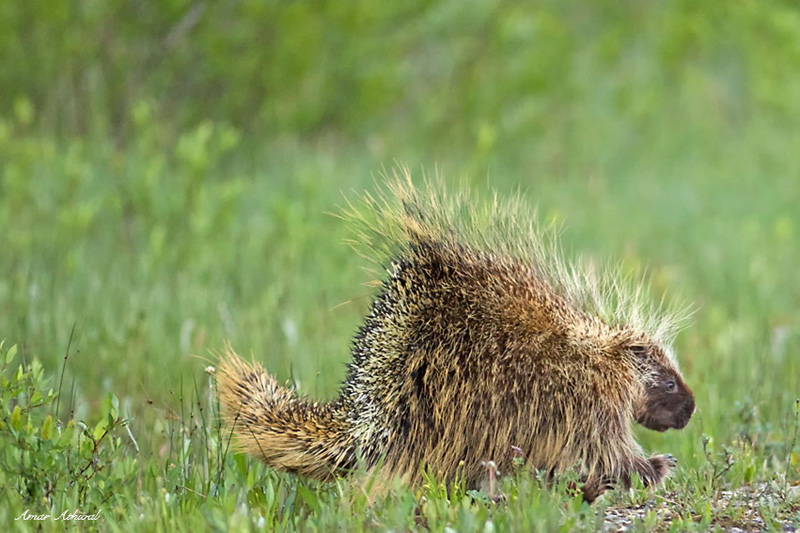We all have our reasons for hiking, and I certainly have mine. It's important to have more than one reason. If my only goal, for example, were to get the perfect picture, I would likely be disappointed most of the time.
More importantly than getting the picture, I find that being active is key, and I find hiking in nature to be very mentally relaxing. So, before I even captured this image, I already felt accomplished that day. The sky was supposed to be partially cloudy that morning, but as I got closer to Lake O’Hara, the clear sky began to disappear. When I reached the lake, it seemed that the first morning light wouldn't break through the clouds. Still, I continued to the spot I wanted to reach, ready to see what would unfold before me.
Half an hour later, I arrived at my location, put my backpack down, and layered up. I had my first food of the day as I waited patiently. I felt relaxed while I waited for the sky to open up. I became a sort of trail greeter, standing or sometimes sitting by the trail, chatting with other hikers who were now making their way up the same route. Their hikes had started at the lake below me. We exchanged a few words; they might take pictures, and then they continued on. This repeated several times with different hikers.
I think I waited in that general spot for about 90 minutes before I was satisfied with the picture and then made my way down to the lake for a stroll before heading home. For this image, I didn’t have to think outside the box. I was already content with my hike and feeling relaxed. Capturing the photo was just a bonus as I enjoyed the views while the sky slowly opened to reveal the shot I wanted. After that, I made a quick descent to the lake, followed by a walk around it. With the water being calm compared to just a few hours earlier, I was able to capture a few more keepers. Another bonus that morning was seeing a few familiar faces on my way down to the lake and while walking around it.
A picture like this is not just about the view it presents. But also, all the experience before and after that came about one beautiful fall morning.



















